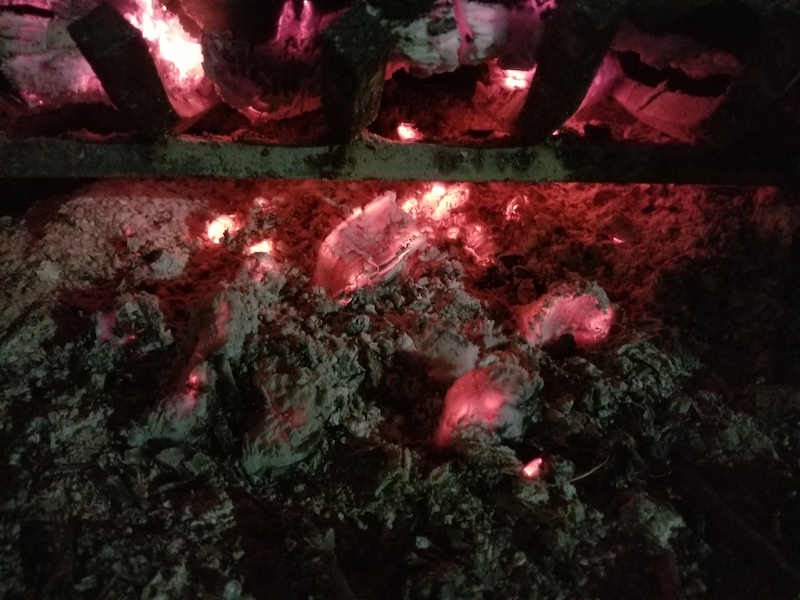Daily Office Readings for June 5, 2020:
AM Psalm 40, 54; PM Psalm 51
Eccles. 5:1-7; Gal. 3:15-22; Matt. 14:22-36
Our reading in Ecclesiastes this morning is good advice for everyone, but it’s probably especially good advice for those who are preparing for Holy Orders…and it just so happens that today is one of the Ember Days appointed in our liturgical calendar.
For those in formation for Holy Orders, Ember Days mean, “I Need to Write a Letter to my Bishop Days,” but the days themselves are a fascinating holdover from the times when our society was mostly agrarian.
The name itself is a bit of a misnomer. Ember Days refer to four Wednesdays, Fridays, and Saturdays in the year that were very likely four agricultural feasts in the ancient Roman religious calendar, and possibly even earlier than that, since many pre-Christian religious practices revolved around the equinoxes and the solstices. In Latin, they were called Quatuor Tempora (the four times). As Roman influence spread across Europe, they were called Quatember, and the English language corrupted the name even further by simply calling them Ember. By the time of Pope Gelasius I (492-496) they had somehow become incorporated into the Christian calendar, and moved from being feasts to times of prayer and fasting. Britain embraced the concept easily (after all, the Celts also had feasts at those times,) and the observance of Ember Days is connected to Augustine of Canterbury (597).
It’s not often I get to use two of my favorite reads, The Farmer’s Almanac, and the Old Farmer’s Almanac, as theological resources, but they provide some additional insight. The common folklore is that these three days foretell the weather for three successive months, and in particular, as it pertains to telling the amount of sunlight (spring), the wheat crop (summer), the grape harvest (fall), and the olive crop (winter.)
So how did this get connected to those in the process for ordination? Again, this began at the time of Pope Gelasius I, and was brought to the British Isles by Archbishop Ecgbert of York (732-766).
As Episcopalians, we can embrace the Ember Days from both angles. Ember Days are a time to consider the wonders of God’s handiwork in the seasons–the lengthening of days in the spring, our gardens and our farmers in the summer, the fall harvests, and the dormancy of winter the ground needs to prepare to do it all over again next year. Additionally, it’s a time to call our prayer attention to the “crop” of the future of ordained leadership in our church–our seminaries and seminarians–as well as the growing numbers of those preparing for Holy Orders outside the traditional 3 year residential seminary experience in our diocesan schools for ministry and hybridizations of both models (Hint, hint–I was one of the latter, and believe me, that’s a very interesting ride, too!).
What I can tell you about my days of being a “person in formation for Holy Orders” is it can feel just as unpredictable as the weather–it has all sorts of spiritual floods, droughts, sunshine and clouds. Writing those letters to my bishop was always one of the harder things to do. What should I talk about? What does my bishop want to know about me and where I am spiritually these days? What can I say that doesn’t just sound like some kind of pious drivel that I think bishops want to hear? I suspect my bishop did his share of laughing at my letters; yet at the same time, I believe he also prayed earnestly for me and that more than one of those prayers carried some intercessions on my behalf. His responses to them were always helpful and thought-provoking.
It also was a great comfort in my formation that I knew there were people out there in my “circle of supporters” praying for me on Ember Days, and praying with heartfelt words. It mattered to see it in the Prayers of the People on the Sundays of those Ember Weeks, and those little emails, notes, and the occasional trinket carried me through a lot of the droughts and floods. It matters to be prayed for while in formation–it really does. It’s something any of us can do that can truly make a difference in the life of a future deacon or priest.
How might you help tend the crop of our postulants and candidates this Ember Week?
Image: Glowing embers for Ember Day, straight from the author’s outdoor fireplace! (photo by Maria L. Evans)
Maria Evans splits her week between being a pathologist and laboratory director in Kirksville, MO, and gratefully serving in the Episcopal Diocese of Missouri , as the Interim Pastor at Christ Episcopal Church, Rolla, MO.

